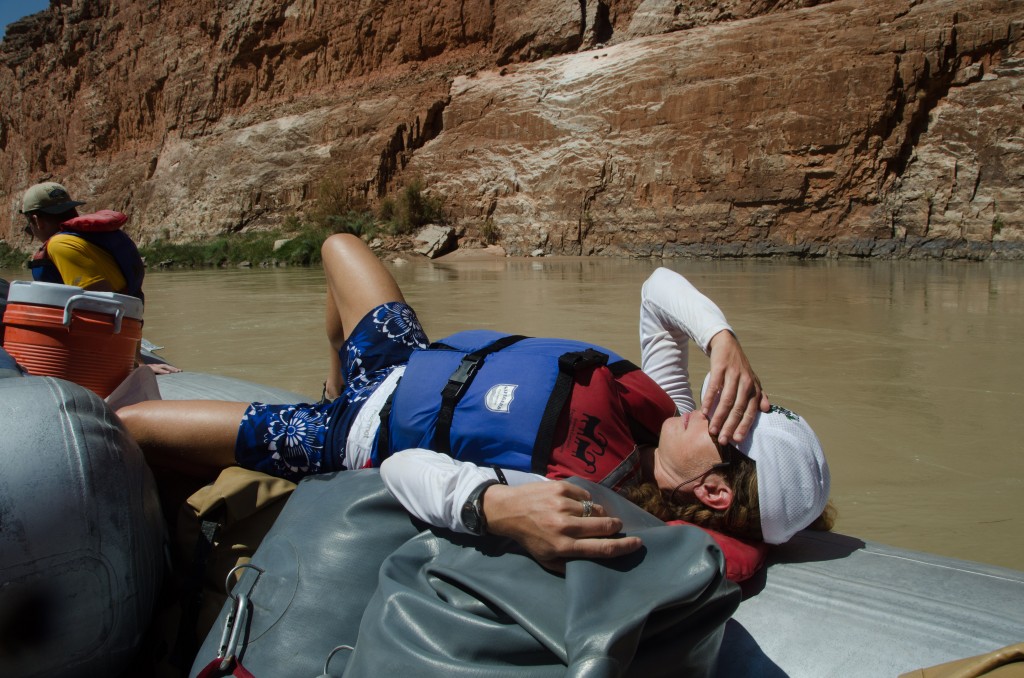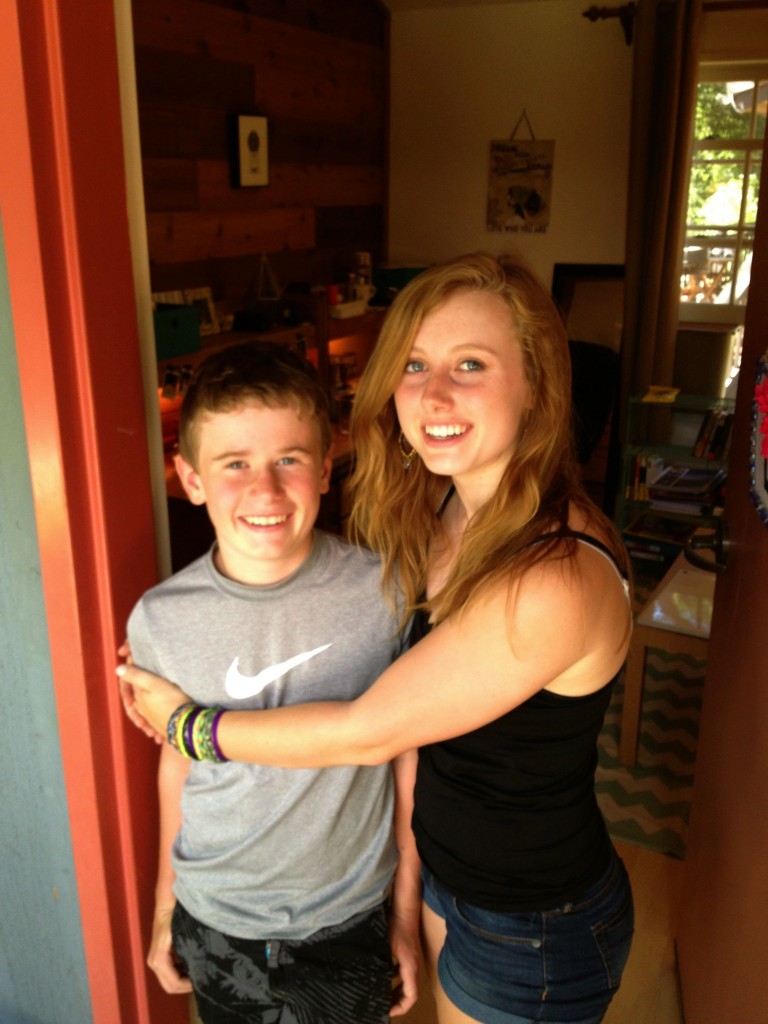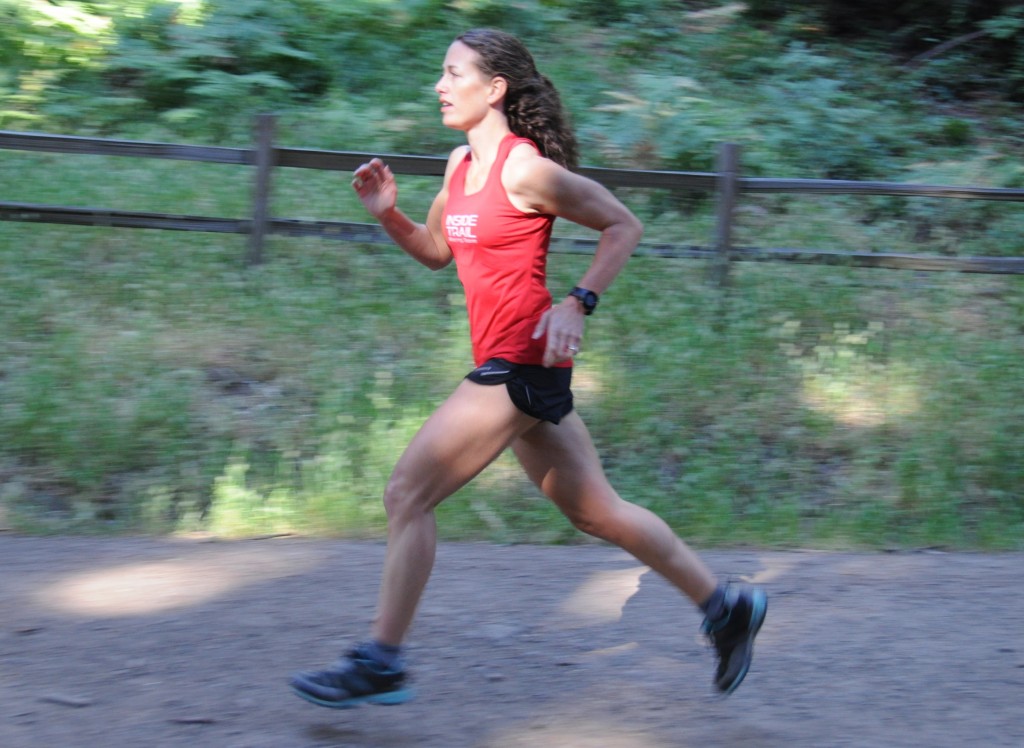Breaking my foot at the start of summer five years ago was so much easier to deal with than the thing that happened this summer. I knew when, where and why the fracture occurred: one morning in June, I missed a step on the front porch stairs. My ankle ligaments twisted so hard that they snapped off a piece of the navicular bone. I knew what to do: stop running, wear a walking cast to immobilize it for about eight weeks, and then slowly return to running with physical therapy. It sucked, but it took just one visit to an orthopedist to diagnose and solve the problem.
This summer, by contrast, I experienced a double whammy of injuries that took over three months to admit, accept, understand and begin to heal. I had one appointment with an orthopedist, one with a podiatrist, two with a sports doc. An Xray, an MRI, a cortisone shot. Two video analyses of my running gait. Eight physical therapy sessions. Enough out-of-pocket medical expenses to nearly meet my high deductible.
Now it’s Labor Day and my kids are back in school. What the heck happened to summer and to my running? Two things that I care deeply about—my training goals, and this blog—totally fell apart and eventually became less important as I focused on healing, spending time with my family, addressing a couple of unexpected parenting issues, and working on time-consuming projects with a lot at stake.
More recently, I helped my son get ready for 7th grade, began volunteering as an assistant coach for his cross-country team and got wrapped up in other activities at his school. Then Morgan and I spent this past weekend moving our 10th-grade daughter into her dorm room at Thacher, where I’m heavily involved as an alumna and board member.
Meanwhile, I collaborated long distance with my siblings as they moved our ailing mom into an assisted care community. My family and I have been dealing with all sorts of transitions while work and deadlines beckon.
In the midst of all that’s going on, I’m carefully getting back to running an hour or less at a time while doing a lot of physical therapy and some spin classes. When I run, I concentrate on fixing imbalances and flaws in my form that were the root causes of my injuries. But I know I also need to work on finding the right work-life-running balance.
Six months ago, my overriding goal and daily focus became training. Coming out of the grief and logistical whirlwind of my dad’s passing in February, I reminisced about the thing from last year that made me feel a previously unknown level of accomplishment, adventure, wonder and vitality: the week-long, self-supported, 167-mile Grand to Grand Ultra in September of 2012 (here’s my Trail Runner article about it). I wanted to return to being the person I was a year ago, when I reveled in the training and ultimately beat back fears to triumph as a top finisher. I couldn’t do the Grand to Grand again this year, so I picked the Pine to Palm 100-miler in September as a comparable inspirational goal.
My plan started out auspiciously. I hired a coach, averaged 60 miles a week of running and spent many additional hours strength training. I raced a great 50-miler in April and beat my previous best times in the East Bay Triple Crown trail series in May and June.
This high level of training was all good—until it wasn’t. I couldn’t keep lying to myself and to my coach about how much my back and foot hurt throughout each day.
The injuries came on suddenly back in June. I went from feeling strong, supple and speedy one week, to limping and struggling to stand up straight the next. Getting out of a chair, my lower back muscles and sacroiliac joint would “lock up” and send twinges of pain down my butt. Walking down the slope of our driveway, I’d press my hand into my left glute and wince as a deep ache radiated in the piriformis. Both walking and running, the ball of my foot and toe joint felt inflamed while pushing off from each foot strike. I would tell myself, This can’t be happening, and I’d run anyway.
If I could bear the unpleasant nervy sensation radiating in my back and butt for the first quarter to half mile, then the muscles would “unlock” enough to let me transition from a shuffle to a jog and finally to a regular run. Then I would run for an hour or more—several hours on the weekend—by ignoring the hot spot in the ball of my foot and toe, which eventually would turn numb. I would run with momentum and willpower, commanding my back and foot to “behave,” as I called it while mentally scolding my injuries—and then I would enjoy my run, relatively speaking, because the positives outweighed the negatives; that is, I’d still get the high from all the things that felt so satisfying about running. The only problem was, as soon as I stopped and lost the momentum, my back would seize up and my foot would start killing me. This can’t be good, I recall a little voice inside telling me.
It seems crazy in hindsight that I didn’t listen to that little voice, and that I pushed myself through injury for so many weeks before surrendering. But it’s not so crazy in the context of endurance sports, when cultivating toughness and the ability to deal with discomfort is embedded in the ethos of training. I also credit or blame my optimism. When I ran through pain, I took the optimistic (albeit unrealistic) view that it would get better, if only I could manage it and soothe it with icing, massage and other measures.
The real trouble, I now realize in retrospect, stemmed from doing the Triple Crown series in May and June—three shorter trail races with a very speedy field. I sabotaged my bigger, longer-term goal of training for the Pine to Palm 100 for the sake of this shorter trail series, all because I wanted to prove to myself I could run it better than the previous time and because it’s a local event that brings together the running community. I felt my foot flare up in the first of the three races in mid-May, and rather than back off, I ran high mileage combined with speedwork and pushed as hard as I could at the next two races.
My coach, to his credit, told me to back off and get to the root of the problem, but I still wanted to maintain a fairly high volume of running so as not to let my fitness slip. Thus began the odyssey of seeing doctors and doing physical therapy, but not really healing because I wasn’t resting enough or getting a proper diagnosis.
Finally, with the help of the MRI and one doctor in particular, I understood the problem and pieced together a recovery plan. I thought the foot pain might be some combination of a stress fracture, neuroma, bone spur and cartilage loss. An earlier Xray revealed a touch of arthritis in my toe—but it was mild and not the real issue. It turns out the problem was just a whole bunch of inflammation: capsulitis (inflammation around the toe joint), and bruising and swelling around the sesamoid bones in the ball of my foot. It’s caused by stress from how I improperly land on and push off from my foot. The pain in my glutes and lower back involves a combination of muscle strain and nerve impingement, made worse by sitting as well as running. Over-striding and overpronating when I run exacerbate it.
These are not new problems—I’ve struggled with these aches and pains in the past—but ramping up speed and mileage with improper form brought them back with a vengeance. The best long-term cure involves fixing the imbalances and asymmetry in my form, which is easier said than done. Like a golfer trying to change his or her swing, it feels unnatural and difficult to change my cadence and footstrike for the sake of better form, but I’m trying.
The process this summer of losing my running routine, and letting go of a goal that I invested so heavily in fulfilling, made me feel as if I had lost the rhythm of my life and my identity as a runner. Depressed, I withdrew and felt I couldn’t relate to anyone in my regular circles; I disconnected from the online ultrarunning community, retreated from Facebook, stopped following race results, stopped caring about Strava and fell out of touch with weekend running buddies.

Resting and unplugging on the Colorado River during a week in the Grand Canyon marked a turning point in dealing with my injuries.
But this process of withdrawing, unplugging and resting helped me gain perspective on the outsized importance running plays in my life and the need to rebalance my relationship to this hobby that in no small part defines who I am, regulates my mood and (usually) brings out the best in me. I re-learned the importance of listening to my body and “doing my own thing” rather than getting swept up in competition and FOMO (fear of missing out); and of gaining more satisfaction and recognition from other parts of my professional and personal life, so that running isn’t compensating for something that’s missing elsewhere.
I’ve written blog posts touching on these themes and these same injuries in the past. Finding the right balance is always a work in progress. Going from injury to peak training to recovery is more cyclical than linear. I know myself well enough to know I’ll still go to extremes, but at least this summer gave me a healthy reminder and renewed perspective on what matters and what I need to do.



Sar – this post really shows the importance of mental health and healing along side the physical aspects of overcoming injuries. Sounds like you have a new acceptance, perspective, and balance about all of this. I’m really happy you are healing in more ways than just the physical. I know how hard this has been on you. This, too, shall pass and you will be refreshed, different and maybe even better for the experience. Hang in there! Love you – M.
A really honest and refreshing post. Thank you, Sarah, and I wish you the best as you rest and recover!
In the small world department, I work closely as School Counselor with Chris
( our Upper School Head) and Rich (our AD) Mazolla, here in Charlottesville. I have learned a lot about how special Thacher is from them. They are wonderful!
The message in this applies to a lot of us, even if we aren’t runners. Thanks.
And that is a GORGEOUS photo of Kyle and Colly….
Hi Sarah,
Sorry to hear about your injury! I’m not a runner, but can commiserate that it sucks when physical ailments impact things that you love. My knees have been bothering me for the last year when I hike in the hills (or walk up stairs) and I’ve had to stop hiking. 🙁 Not sure what the solution is, but I miss my pain-free knees!
I always enjoy reading about your latest adventures – family, travel or running. Thanks for sharing.
Sorry to hear about your injury, Sarah. You are echoing some of the same thoughts I’ve been having. I too have been bitten by the injury bug. I was ramping up my mileage and doing speed work, when plantar fasciitis reared its ugly head. It’s disappointing, but the bigger picture calls for patience and proper injury management, along with a boatload of cross training! Good luck to the both of us as work our ways back to the ultra scene.
I too have been struggling with the “outsized importance running plays in my life” and it was helpful to me to read this. Thank you.
Sarah,
Sorry to learn of your injury. Your writing routinely touches to the core. All runners experience injuries and nearly all of us try to run through them to a certain point. Your mental toughness allowed you to take it further than most.
Congratulations on re-balancing your life during your healing process. I look forward to reading about your continued recovery and your next set of goal-setting adventures.
Sarah,
I love this post and I could relate to every word. I also did not get to start Pine to Palm this year and I had a very similar experience this summer with long-term injuries and recovery. And today, instead of P2P, I had a wonderful day of hiking and playing with my kids. I’m so glad that you enjoyed your summer with your family and are starting to be able to run again.